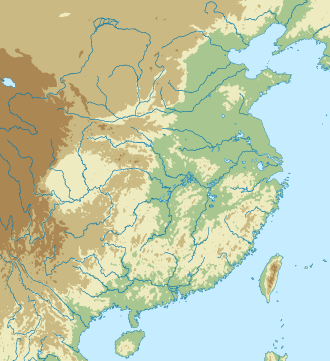| Battle of Huoyi | |||||||
|---|---|---|---|---|---|---|---|
| Part of the transition from Sui to Tang | |||||||
| |||||||
| Belligerents | |||||||
| Li Yuan's forces | Sui dynasty | ||||||
| Commanders and leaders | |||||||
|
Li Yuan Li Shimin Li Jiancheng Chai Shao Yin Kaishan | Song Laosheng † | ||||||
| Strength | |||||||
| c. 25,000[1] | 20,000 or 30,000[2] | ||||||
Location within China | |||||||
The Battle of Huoyi (霍邑之戰; Wade–Giles: Huo-i) was fought in China on 8 September 617,[3] between the forces of the rebel Duke of Tang, Li Yuan, and the army of the ruling Sui dynasty. Li Yuan, with an army of around 25,000, was advancing south along the Fen River towards the imperial capital, Daxingcheng (the modern Xi'an). His advance was stalled for two weeks due to heavy rainfall, and he was met at the town of Huoyi by an elite Sui army of 20,000 (or 30,000) men. Li Yuan's cavalry, under the command of his two eldest sons, lured the Sui out of the protection of the city walls, but in the first clash between the two main armies, Li Yuan's forces were initially driven back. At that point, possibly due to a stratagem on Li Yuan's behalf, the arrival of the rest of the rebel army, or the flanking maneuver of Li Yuan's cavalry, which had gotten behind the Sui army, the Sui troops collapsed and routed, fleeing back towards Huoyi. Li Yuan's cavalry, however, cut off their retreat. The battle was followed by the capture of weakly defended Huoyi and the advance on Daxingcheng, which fell to the rebels in November. The following year, Li Yuan deposed the Sui and proclaimed himself emperor, beginning the Tang dynasty.
- ^ Graff 1992, p. 42.
- ^ Graff 1992, p. 43.
- ^ ([大业十三年]八月辛巳,高祖引师趋霍邑,斩宋老生,平霍邑。) Jiu Tang Shu, vol.01
© MMXXIII Rich X Search. We shall prevail. All rights reserved. Rich X Search

